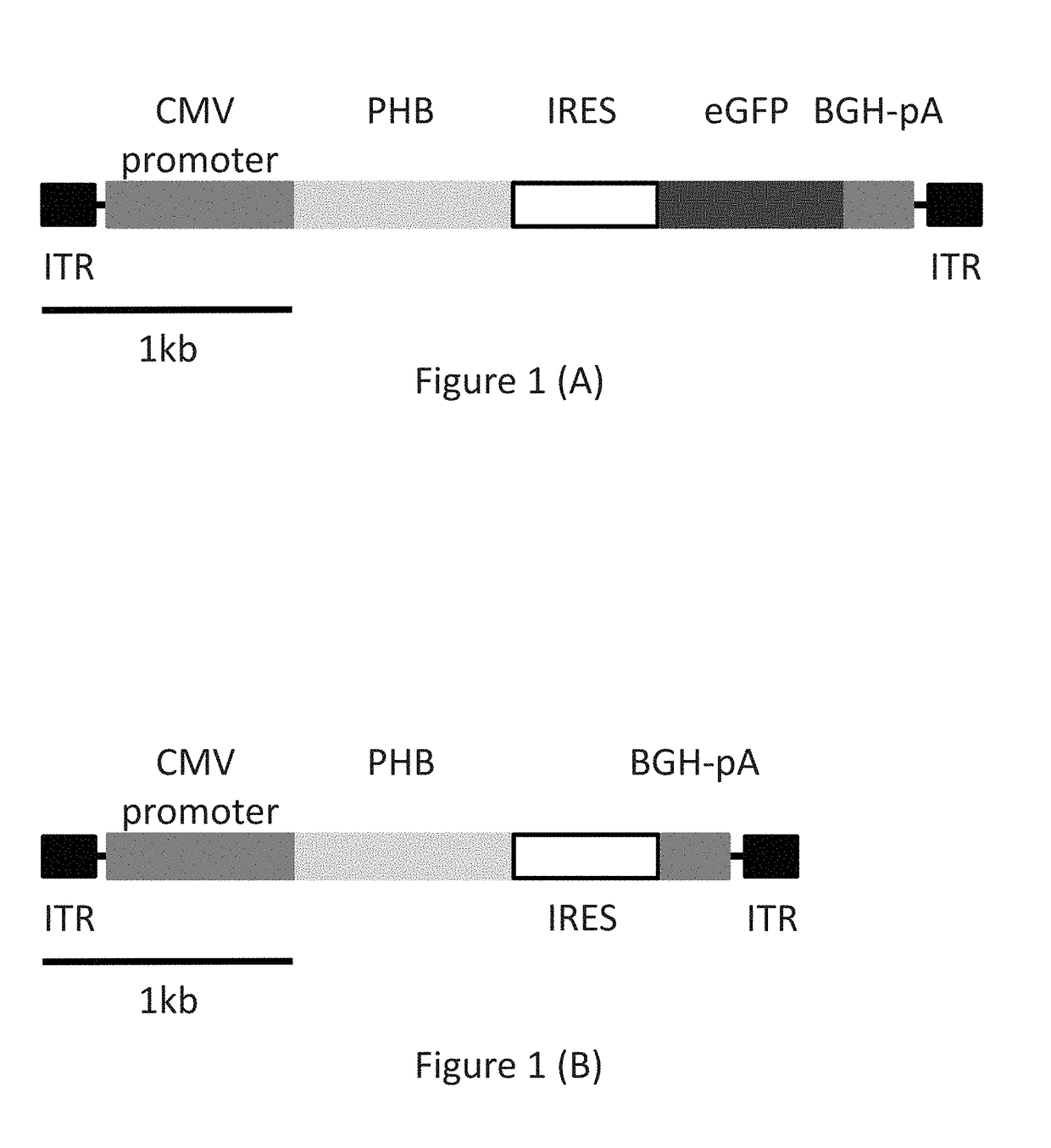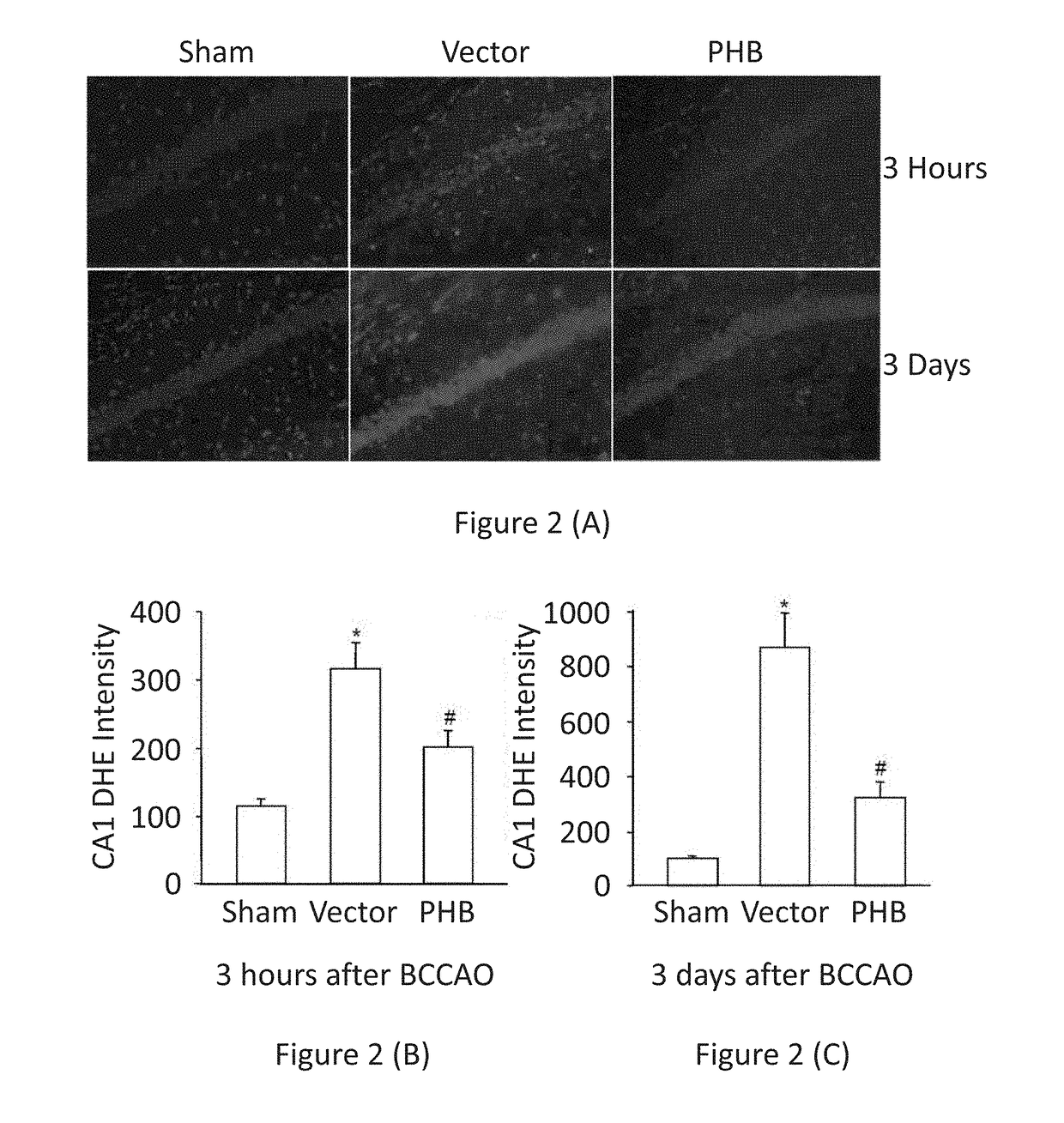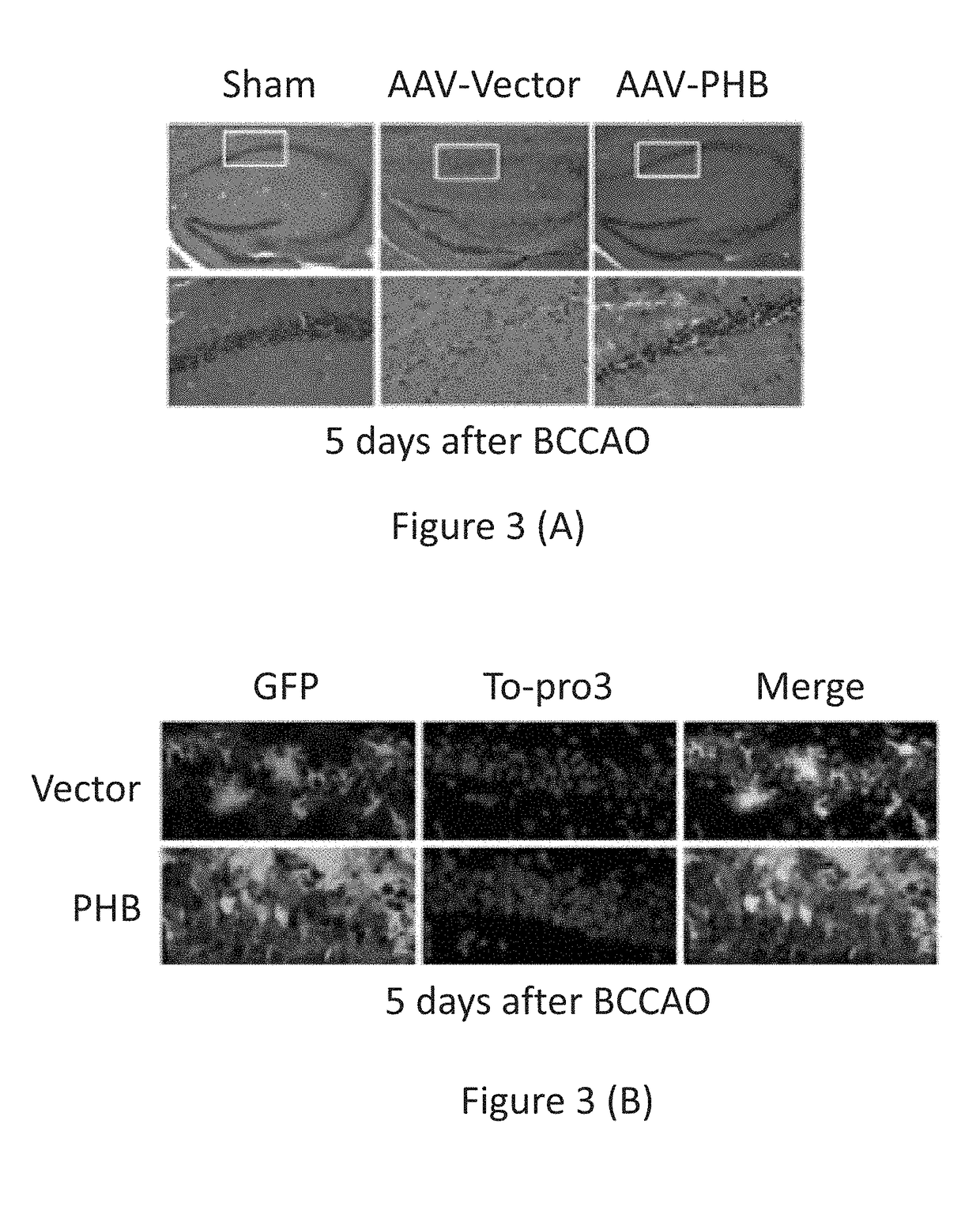Gene therapy for Alzheimer's and other neurodegenerative diseases and conditions
a neurodegenerative disease and gene therapy technology, applied in the direction of viruses/bacteriophages, peptide sources, peptide sources, etc., can solve the problems and achieve the effect of short-term potentiation of neurons
- Summary
- Abstract
- Description
- Claims
- Application Information
AI Technical Summary
Benefits of technology
Problems solved by technology
Method used
Image
Examples
example 1
PHB is a Potent Modulator of Mitochondrial ROS Production
[0111]PHB overexpression has been shown to attenuate ROS production from complex I in cultured primary mouse cortical neurons. Neurons dissected at E16 and maintained for 5 days in vitro were co-transfected with two plasmids encoding human PHB and GFP, respectively. 5 days after transfection, neurons were challenged with the specific mitochondrial respiratory chain complex I inhibitor Rotenone (5 μM). Neurons co-transfected with empty vector and GFP served as controls. PHB expressing neurons exhibited reduced rotenone-induced mitochondrial ROS production, assessed by the mitochondrial ROS reporter MitoSOX (ZHOU, et al., J Neurosci, 32(2):583-592 (2012)). Downregulation of endogenous prohibitin by siRNA enhanced ROS production in primary neurons treated with glutamate (25 mM for 5 hrs) (ZHOU, et al., J Neurosci, 32(2):583-592 (2012)). These data obtained in cultured neurons indicated that prohibitin overexpression is a viable s...
example 2
PHB Expression in Hippocampal Tissue Suppresses Post-Ischemic ROS Production
[0112]Viral particles containing a recombinant AAV vector coding for human PHB sequence (See FIG. 1) were injected stereotactically into the CA1 sector of the hippocampus of 12 month-old APP-Tg mice. For simplicity, injections of virions containing AAV vectors in this and following examples are also referred to in this and the following examples as injections of AAV vectors.
[0113]The AAV vector encoded in a 5′ to 3′ direction, an inverted terminal repeat (ITR) sequence; a cytomegalovirus (CMV) promoter sequence, a prohibitin (PHB) sequence, an internal ribosome entry site (IRES) sequence, an enhanced green fluorescent protein (EGFP) sequence, and a bovine growth hormone polyadenylation (BGH-pA) sequence. The nucleic acid sequence for the prohibitin used for this study is set forth in SEQ ID NO: 1.
[0114]Under isoflurane anesthesia (1.5% to 2.0%), a midline skin incision was made between the bregma and interau...
example 3
AAV-Mediated PHB Expression in CA1 Protects Against BCCAO-Induced Cell Death
[0117]Bilateral carotid common artery occlusion (BCCAO) caused extensive neuronal death in the CA1 region of mice injected with control vector, assessed by morphological criteria. In mice that received AAV-PHB injections, neuronal death in the CA1 region was prevented (see FIG. 3, showing the effect of PHB expression following treatment according to the methods of the present invention on cell death following BCCAO). FIG. 3 (A) shows H & E staining of hippocampal sections 5 days after BCCAO. AAV-vector injected hippocampus suffered extensive cell death in CA1 (middle panels), an effect reduced by PHB expression (right panels). FIG. 3 (B) shows cell morphology in hippocampus 5 days after BCCAO. Hippocampal sections were stained with Alexa 488 conjugated anti-GFP antibody and counterstained with the nuclear dye To-pro-3. Top panels, vector injected. Lower panels PHB injected. Note that many of the surviving ce...
PUM
| Property | Measurement | Unit |
|---|---|---|
| height | aaaaa | aaaaa |
| height | aaaaa | aaaaa |
| length | aaaaa | aaaaa |
Abstract
Description
Claims
Application Information
 Login to View More
Login to View More - R&D
- Intellectual Property
- Life Sciences
- Materials
- Tech Scout
- Unparalleled Data Quality
- Higher Quality Content
- 60% Fewer Hallucinations
Browse by: Latest US Patents, China's latest patents, Technical Efficacy Thesaurus, Application Domain, Technology Topic, Popular Technical Reports.
© 2025 PatSnap. All rights reserved.Legal|Privacy policy|Modern Slavery Act Transparency Statement|Sitemap|About US| Contact US: help@patsnap.com



